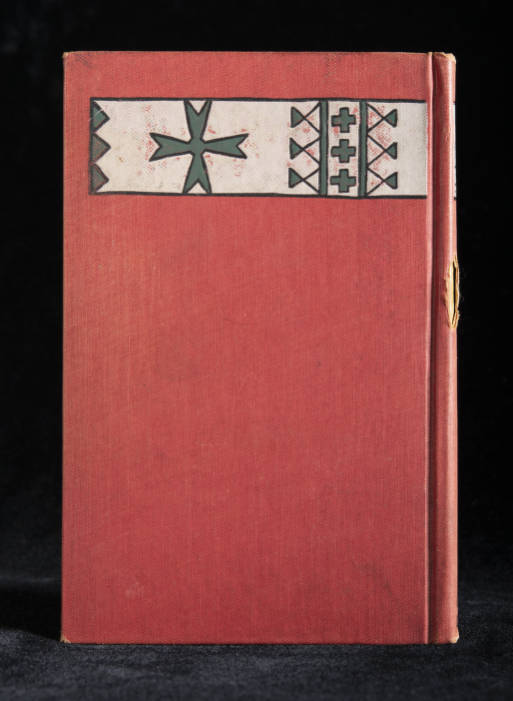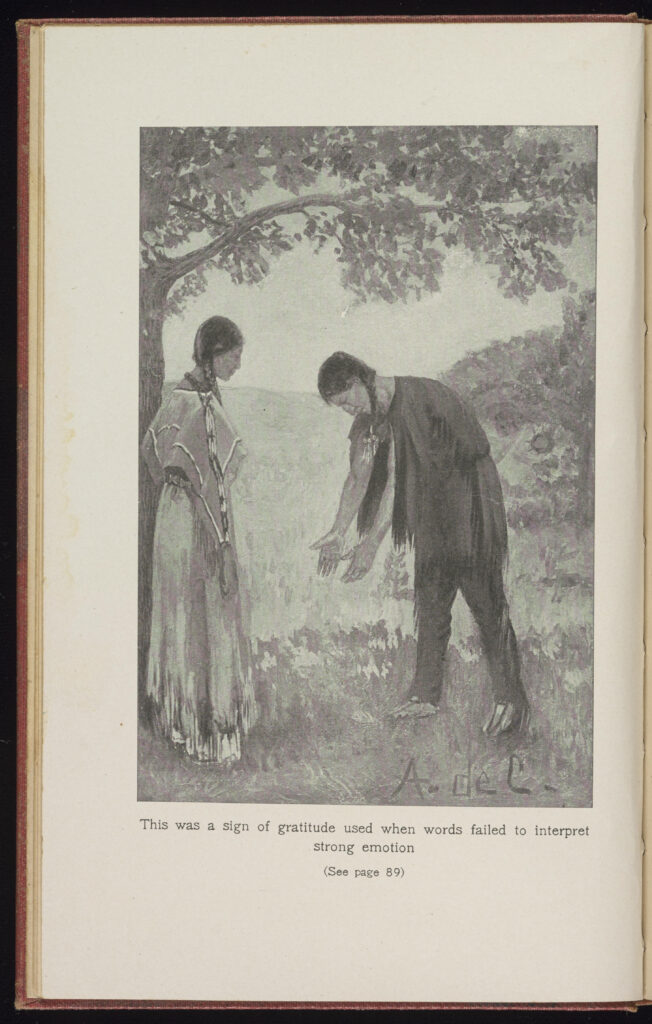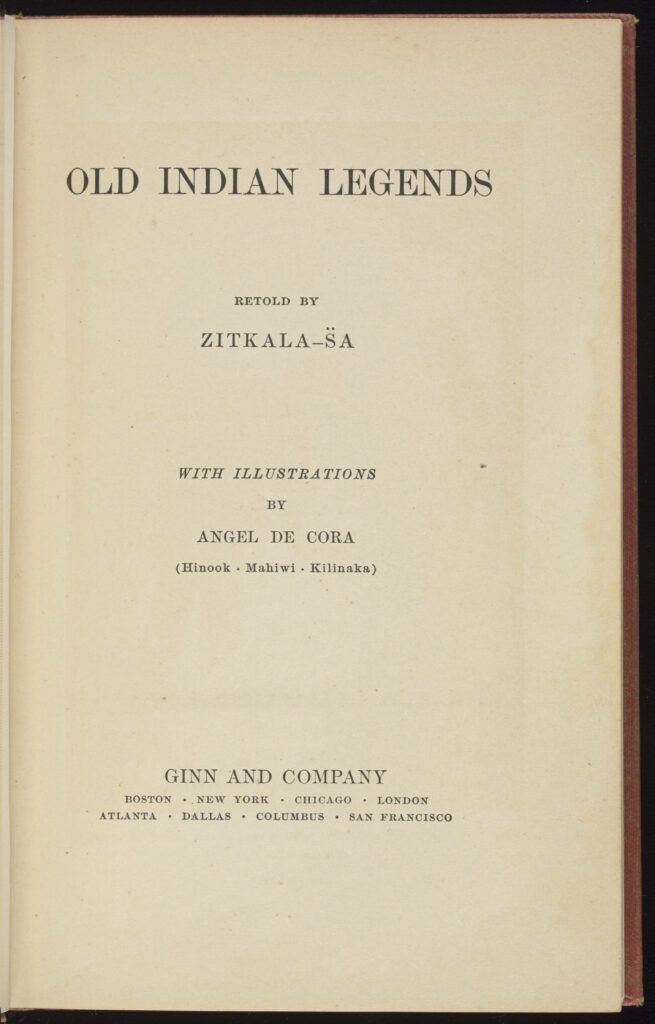By Jasper Greuel, Journalism News and Information, ’25 and Sullivan Beach, Journalism News and Information, ’25, for JOUR 4130 Gender, Race, and Class in Journalism and Mass Media with Victoria LaPoe, Fall 2024
During the fall 2024 semester, the staff of the Mahn Center for Archives and Special Collections worked intensively with Victoria La Poe’s JOUR 4130 class, Gender, Race, and Class in Journalism and Mass Media. The students explored, selected, and researched materials from the collections, then worked in small groups to prepare presentations. The students had the option to then expand their research into a blog post like this one for their final project.
Old Indian Legends
Zitkala-Ša (Yantkton Dakota) was a writer who wanted to create opportunities and protect culture. Zitkala-Ša’s Old Indian Legends (1901) is a collection of traditional Indigenous stories. In the preface of the book Zitkala-Ša states, “These legends are relics of our country’s virgin soil. These and many others are the tales the little black-haired aborigine loved so much to hear beside the night fire.” (Old Indian Legends Zitkala-Ša 1901). Right off the start from the preface of the book, you get the sense that you are going to learn through storytelling. You also get to read stories by a great writer Zitkala-Ša. In the table of contents, you can see each one of the stories that Zitkala-Ša wants to retell organized by page number.
A few of the stories in the book follow a man named Iktomi, who is described as a “spider fairy.” In some cultures Iktomi was a mythological being that was known to be a trickster. According to the article “Iktomi – Native American Spider-Trickster Spirit Whose Stories Teach Moral Values,” Ellen Boyd writes “Like many other mythological tricksters, Iktomi finds himself in constant trouble. He is very destructive, primarily to himself. Iktomi likes to play games and trick people, but in most cases, his intricate plans to harm others backfire, and he finds himself in hopeless situations. Being a shapeshifter and spider-trickster in Lakota mythology, Itkomi is famous for using strings to control humans like puppets” (ancientpages.com, Ellen Boyd, 2019).
On page 3 of Old Indian Legends begins the first story retold in the book, “Iktomi and the Ducks.” The story begins describing Iktomi’s features. In the first paragraph it states, “Iktomi is a spider fairy. He wears brown deerskin leggings with long soft fringes on either side, and tiny moccasins on his feet.” (Old Indian Legends, Zitkala-Ša, 1901, page 3). The piece then describes Iktomi’s character traits, and how Iktomi always gets into mischief and struggles to find friends. The first story is about Iktomi when he comes across some ducks. Iktomi charms the ducks into watching him sing, until he decides to cook the ducks for his meal. A pack of wolves then come in and steal his cooked ducks. Weaved throughout the story you can see Iktomi being sort of clumsy, and incompetent even though he tricked the ducks into becoming his meal.
Stories Streamed Today and Preservation of Stories
An example of Indigenous stories told in an easily accessible way today is on the Netflix series Spirit Rangers. This series delves into stories similar to those in Old Indian Legends. Had it not been for Zitkala-Sa’s work, such stories may not have been as known today. Awareness of culture, including in news stories and journalism, is essential for those in society and for those covering different communities.
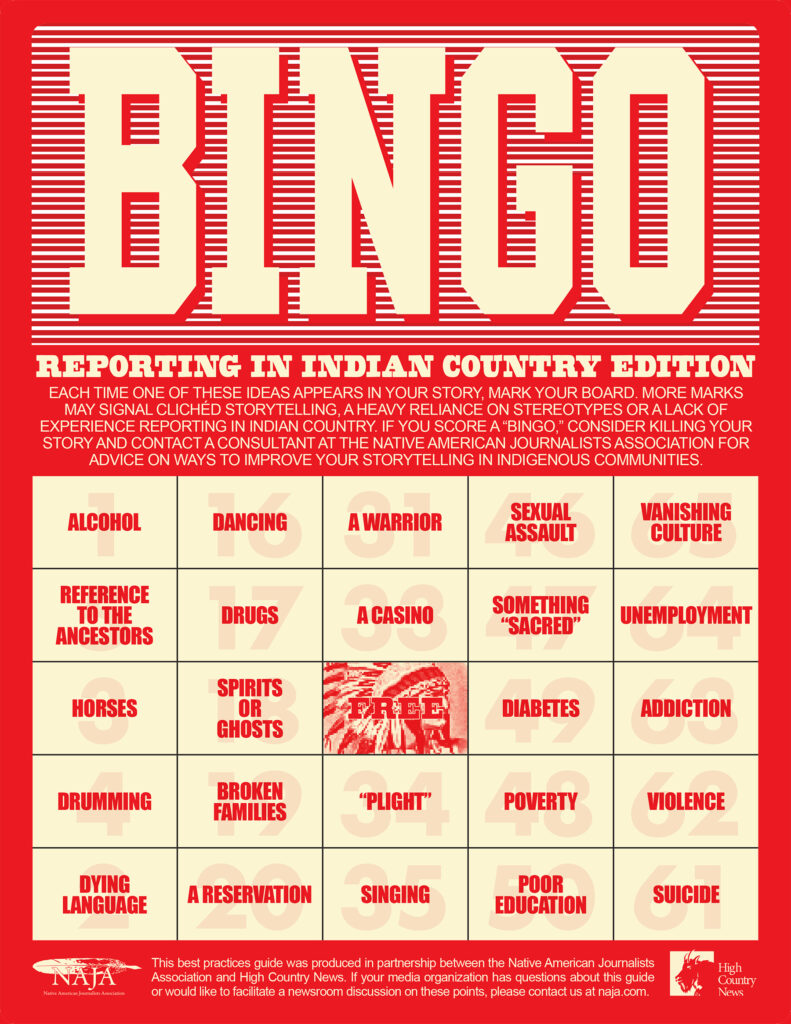
Pictured above is a Bingo Card published by the Indigenous Journalists Association that details common stereotypes that are written by media publications when it comes to the news. It is a useful tool for journalists who wish to cover Indigenous communities today. Reference guides such as this are important to ensure journalists report a more accurate depiction of, as stated on the card, “Indian Country.”
The idea that there is little to no information on the background and current events happening in Native American communities is especially false due to the various news publications that exist that cover these issues extensively. Take for example the Cherokee Phoenix, a news publication founded in 1828 and still running to this day. Another great resource for aspiring journalists who want to better their writing is the Indigenous Journalists Association. Founded in 1983, their website provides journalists with many resources to become better researchers and writers when it comes to the level of Indigenous representation in journalism, as well as to the quality of writing journalists produce.
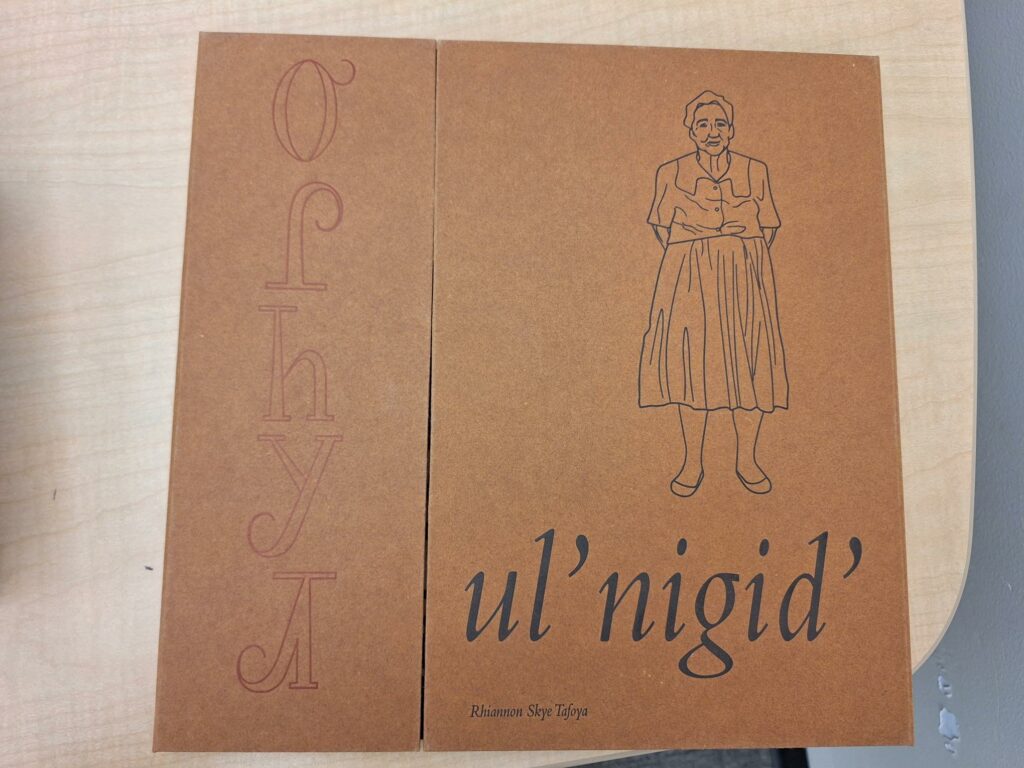
An Artful Story at Alden Library
Pictured above is Skye Tafoya’s work Ul’nigid’ which is a piece that she made in honor of her grandmother. It tells a poetic narrative of Tafoya’s culture through the use of basket weaving to get to the poem that is inside the piece. By having the piece be constructed this way, it conveys to the audience the importance of her culture and creates an experience for the reader to signify this.
One of the most important lessons that we learned in our class was the idea of standpoint theory in which the idea of how things are in the world is molded by our own personal experience and will impact the way that we write. Keeping this in mind is crucial to becoming a better writer because acknowledging the bias that we have as people can make it easier to acknowledge mistakes and learn from them when reporting on things that we may lack experience from. Everyone has their own unique ideology which is what makes resources like Old Indian Legends and other pieces such as Skye Tafoya’s Ul’nigid’ so important because they are primary sources of their cultural experiences.
If journalists can better understand that there are a variety of resources available to learn about other cultures, it can not only serve them better as writers, but it is right by the audience to prevent harmful misinformation and stereotyping. Linked throughout this entry are a variety of sources to learn from as a person, and hopefully these sources will help contribute to bettering everyone not only writers but also help readers better understand why these issues are important and why stories need to be shared.
References
“The Hidden History of China’s Secret Societies,” Featured Stories | Nov 23. “Iktomi – Native American Spider-Trickster Spirit Whose Stories Teach Moral Values.” Ancient Pages, 24 Aug. 2024.
Cherokeephoenix.org. “Cherokeephoenix.Org.” Cherokeephoenix.Org, 6 Dec. 2024.
Dines, Gail, and Jean McMahon Humez. Gender, Race and Class in Media: Text Reader. Sage, 1994.
“Indigenous Journalists Association.” IJA, 31 Dec. 1969, www.indigenousjournalists.org/.
“Rhiannon Skye Tafoya -Ul’nigid’.” Focus on Book Arts, focusonbookarts.org/.
Sa, Zitkala. Old Indian Legends.
Slemenda, Jack. “Skye Tafoya’s Ul’nigid’ – the Basket Book That Carries Stories.” The New Political, The New Political, 14 Oct. 2024, www.thenewpolitical.com/.
“Zitkala-Sa.” Encyclopædia Britannica, Encyclopædia Britannica, inc., 22 Nov. 2024, www.britannica.com/.

